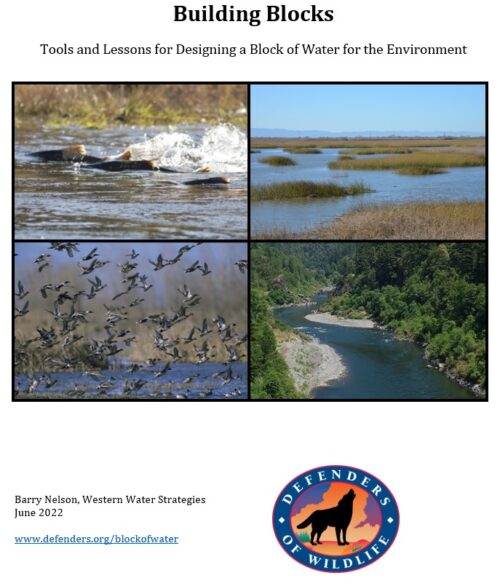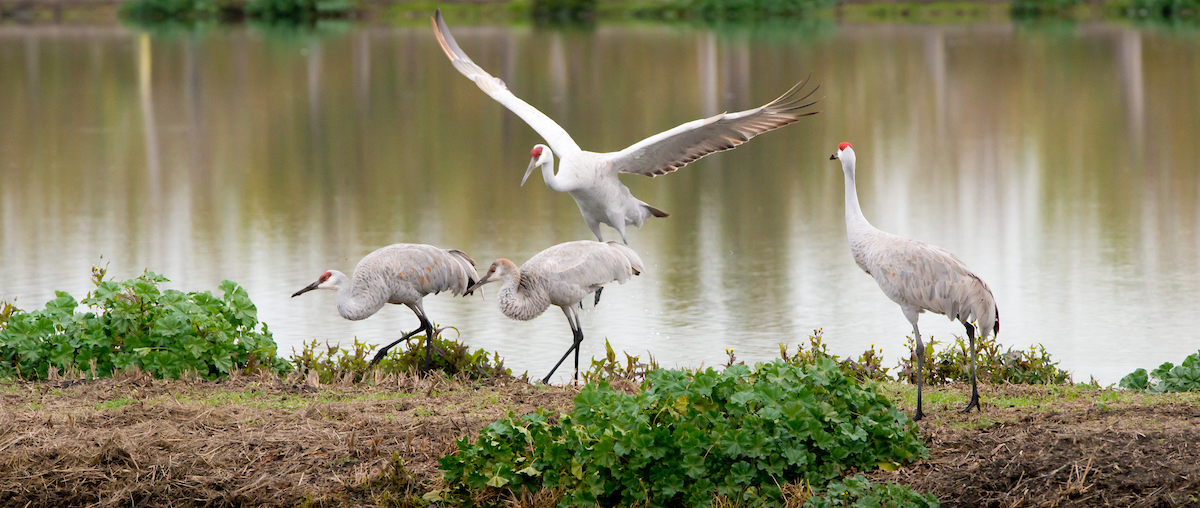Commentary by Barry Nelson, a water policy consultant who has been involved in Bay-Delta issues for more than thirty years
California rivers and wetlands have suffered serious damage from dams and water diversions. Reversing this damage and restoring healthy flows to these ecosystems is famously difficult. One traditional approach is for regulators to adopt requirements for minimum environmental flows based on an annual calendar and designed to meet particular ecosystem and species needs.
 Over the past decade, water agencies, think tanks and some NGOs have suggested a different and more flexible approach – creating an “environmental block of water” – which dedicates a specific amount of water to an ecosystem. The central theory is that a block of water managed flexibly, depending on local conditions and scientific analysis, may produce the best results with the least water.
Over the past decade, water agencies, think tanks and some NGOs have suggested a different and more flexible approach – creating an “environmental block of water” – which dedicates a specific amount of water to an ecosystem. The central theory is that a block of water managed flexibly, depending on local conditions and scientific analysis, may produce the best results with the least water.
Advocates of this approach argue that it could help reverse the decline of the Bay-Delta estuary, Central Valley rivers, endangered fish species and salmon runs valued by Native Americans and the fishing industry. This concept has been hotly debated, giving the impression that the idea is new. It is not.
Defenders of Wildlife has issued a new white paper “Building Blocks” to encourage a more productive discussion around how to create successful and widely supported environmental blocks of water.
“Building Blocks” summarizes 18 such projects in California, across the West and abroad. Some environmental blocks of water have produced real benefits. Others have remained gridlocked for years. Notably, none of the programs examined was implemented without significant challenges.
“Building Blocks” does not include a simple prescription for success. The reality is different settings require different approaches. Instead, this paper poses a series of questions, organized in 11 categories informed by research and dozens of interviews. It presents a checklist for consideration when creating new environmental water programs.
“Building Blocks” examines many efforts in the Bay-Delta watershed that use this approach. These examples are important for two reasons. First, there is a current discussion around creating a new block of water through the controversial Bay-Delta “voluntary agreement” process as well as in the legislature. Second, we have much to learn from the difficulties in implementing this approach in the Bay-Delta’s highly complex water management environment. With two enormous water projects, hundreds of dams on more than a dozen rivers, thousands of diversions and many imperiled species and complex environmental damage, the Bay-Delta presents a particularly challenging setting in which to create a successful environmental block of water.
To see the importance of these challenges, one need look no farther than the oldest example in this paper. For decades, Humboldt County has sought to use 50,000 acre-feet of water from the Bureau of Reclamation to benefit the Trinity River and the lower Klamath River. However, more than sixty years after their water contract was signed, Humboldt County has not secured the release of any of that water for the Trinity and Klamath rivers.
Additional important lessons abound.
Accounting for a block of environmental water can be surprisingly challenging and contentious. And different approaches to accounting can dramatically increase or reduce environmental water. In some cases, a lack of water delivery infrastructure has meant that a block of environmental water cannot reach the ecosystem it is intended to benefit. In other cases, incorporating credible science into this flexible, adaptive approach has been difficult. Interactions with the ongoing operations of dozens of dams and diversions can also produce unintended ecosystem damage from well-intentioned environmental water programs.
But complex water systems can also produce opportunities – such as improving flows for Northern California salmon through water exchanges and water recycling efforts in Southern California. The 18 examples and decades of experience examined in “Building Blocks” reveal both the potential and pitfalls of this approach.
Besides looking at past examples, this white paper also examines the need to address equity issues, including environmental justice and tribal rights. Moving forward, those issues will be important to consider in developing new environmental water programs.
“Building Blocks” is centered on the premise that efforts to create a new environmental block of water would be wise to examine past efforts and carefully consider the many different facets of this approach. As the philosopher George Santayana said, “those who fail to learn from history are condemned to repeat it.”
Barry Nelson is a water policy consultant who has been involved in Bay-Delta issues for more than thirty years.



